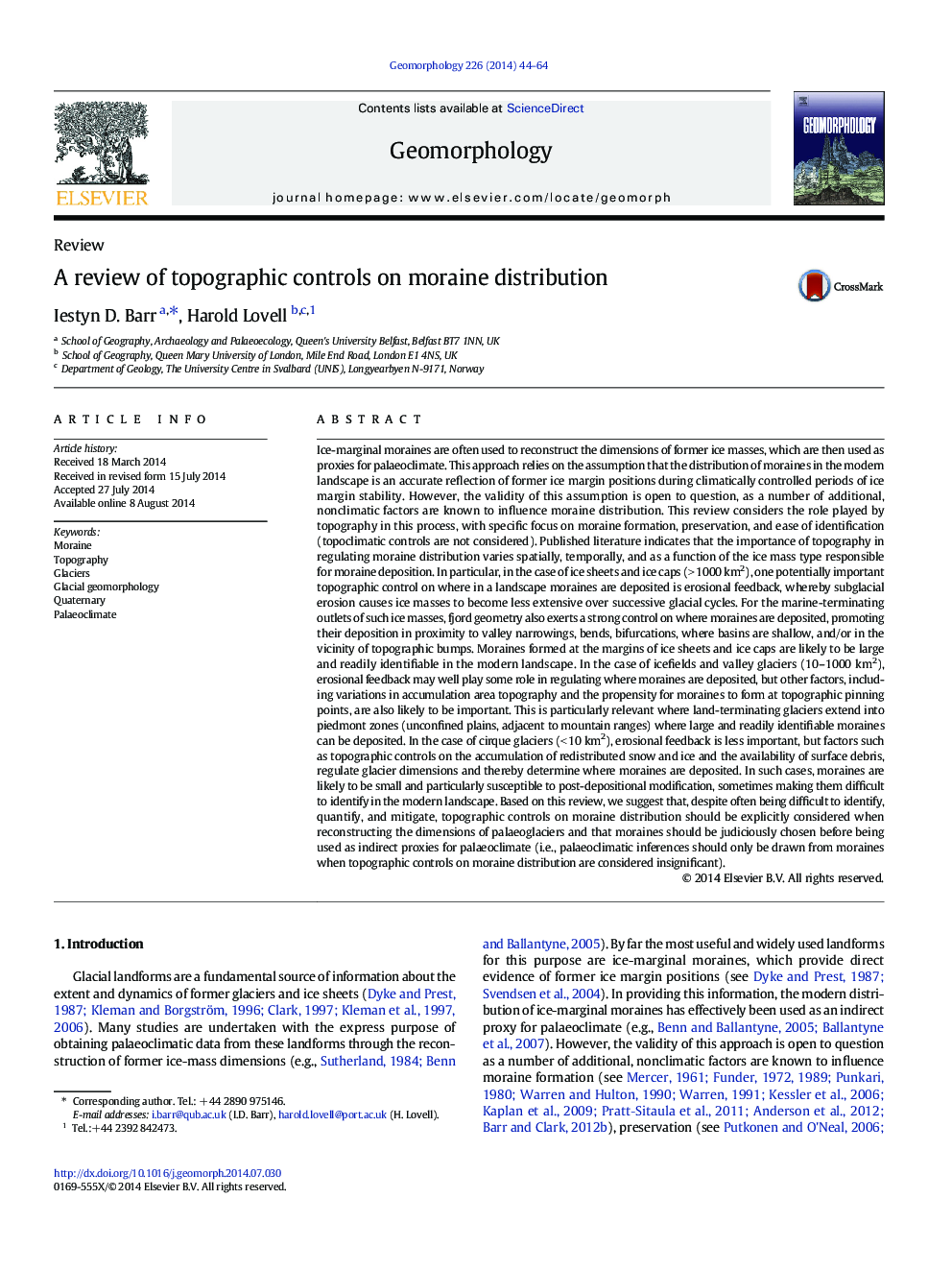| کد مقاله | کد نشریه | سال انتشار | مقاله انگلیسی | نسخه تمام متن |
|---|---|---|---|---|
| 4684440 | 1635423 | 2014 | 21 صفحه PDF | دانلود رایگان |
• We review topographic controls on moraine distribution.
• We focus on controls on moraine formation, preservation and identification.
• The importance of topography varies spatially, temporally and with ice mass type.
• Topographic controls should be taken into consideration in glacier reconstructions.
• Moraine position should not automatically be assumed to reflect palaeoclimate.
Ice-marginal moraines are often used to reconstruct the dimensions of former ice masses, which are then used as proxies for palaeoclimate. This approach relies on the assumption that the distribution of moraines in the modern landscape is an accurate reflection of former ice margin positions during climatically controlled periods of ice margin stability. However, the validity of this assumption is open to question, as a number of additional, nonclimatic factors are known to influence moraine distribution. This review considers the role played by topography in this process, with specific focus on moraine formation, preservation, and ease of identification (topoclimatic controls are not considered). Published literature indicates that the importance of topography in regulating moraine distribution varies spatially, temporally, and as a function of the ice mass type responsible for moraine deposition. In particular, in the case of ice sheets and ice caps (> 1000 km2), one potentially important topographic control on where in a landscape moraines are deposited is erosional feedback, whereby subglacial erosion causes ice masses to become less extensive over successive glacial cycles. For the marine-terminating outlets of such ice masses, fjord geometry also exerts a strong control on where moraines are deposited, promoting their deposition in proximity to valley narrowings, bends, bifurcations, where basins are shallow, and/or in the vicinity of topographic bumps. Moraines formed at the margins of ice sheets and ice caps are likely to be large and readily identifiable in the modern landscape. In the case of icefields and valley glaciers (10–1000 km2), erosional feedback may well play some role in regulating where moraines are deposited, but other factors, including variations in accumulation area topography and the propensity for moraines to form at topographic pinning points, are also likely to be important. This is particularly relevant where land-terminating glaciers extend into piedmont zones (unconfined plains, adjacent to mountain ranges) where large and readily identifiable moraines can be deposited. In the case of cirque glaciers (< 10 km2), erosional feedback is less important, but factors such as topographic controls on the accumulation of redistributed snow and ice and the availability of surface debris, regulate glacier dimensions and thereby determine where moraines are deposited. In such cases, moraines are likely to be small and particularly susceptible to post-depositional modification, sometimes making them difficult to identify in the modern landscape. Based on this review, we suggest that, despite often being difficult to identify, quantify, and mitigate, topographic controls on moraine distribution should be explicitly considered when reconstructing the dimensions of palaeoglaciers and that moraines should be judiciously chosen before being used as indirect proxies for palaeoclimate (i.e., palaeoclimatic inferences should only be drawn from moraines when topographic controls on moraine distribution are considered insignificant).
Journal: Geomorphology - Volume 226, 1 December 2014, Pages 44–64
